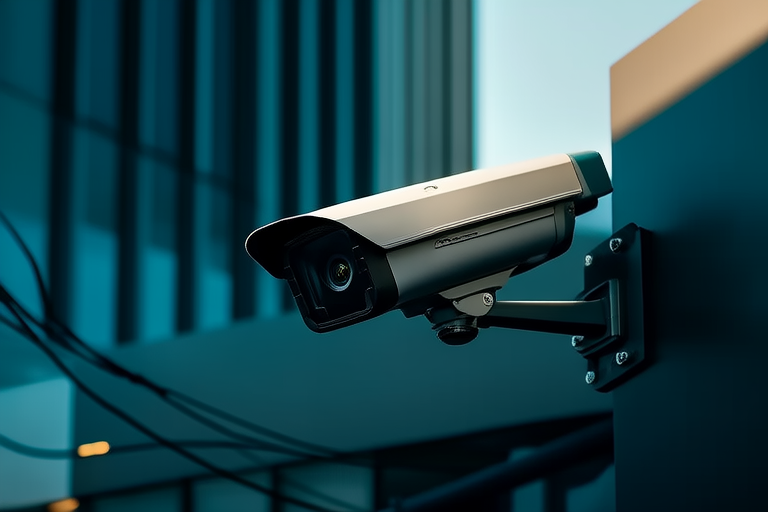“`html
The Future of Surveillance: Advancements in Computer Vision Technology
Surveillance technology has evolved significantly over the past few decades, becoming an integral part of modern society. From security systems to traffic management, surveillance plays a critical role in ensuring safety, efficiency, and compliance. Central to this evolution is the rapid advancement of computer vision technology, which enables machines to interpret and understand visual data. This article explores the current state of surveillance technology, highlights key advancements in computer vision, addresses ethical and privacy concerns, and looks ahead to the future prospects of this transformative field.
Introduction
Surveillance technology encompasses a wide range of tools and techniques used to monitor and record activities in public and private spaces. Historically, surveillance relied heavily on human operators watching video feeds, but the introduction of computer vision has revolutionized the field. By enabling machines to analyze and interpret visual data, computer vision has enhanced the capabilities of surveillance systems, making them more efficient, accurate, and versatile.
The importance of advancements in computer vision cannot be overstated. As technology continues to progress, the ability to process vast amounts of visual data in real-time will become increasingly crucial. This article delves into the current state of surveillance technology, examines recent breakthroughs in computer vision, and considers the ethical implications of these advancements.
Current State of Surveillance Technology
Today’s surveillance systems are equipped with sophisticated computer vision algorithms that enhance their functionality. These systems can automatically detect and classify objects, recognize faces, and even analyze human behavior. In the realm of security, computer vision enables smart cameras to identify suspicious activities and alert authorities in real-time. Traffic management systems use computer vision to monitor road conditions, optimize traffic flow, and prevent accidents. Retail stores leverage computer vision for customer analytics, inventory management, and loss prevention. Similarly, healthcare facilities employ surveillance technology to monitor patient movements and ensure compliance with protocols.
Despite these advancements, current surveillance technologies face several limitations. Challenges include processing large volumes of data, ensuring accuracy in diverse environments, and addressing privacy concerns. Moreover, the increasing reliance on AI and machine learning raises questions about transparency, bias, and accountability.
Key Advancements in Computer Vision
Recent breakthroughs in deep learning and neural networks have significantly improved computer vision capabilities. Deep learning models, particularly convolutional neural networks (CNNs), have achieved remarkable accuracy in tasks such as facial recognition, object detection, and behavior analysis. These advancements enable surveillance systems to operate more efficiently and effectively, reducing the need for human intervention.
Facial recognition technology, for instance, has seen significant improvements in accuracy and speed. Systems can now identify individuals with high precision, even in challenging conditions. Object detection algorithms have also advanced, allowing surveillance systems to accurately classify and track multiple objects simultaneously. Behavior analysis, another emerging area, uses computer vision to interpret human actions and predict potential risks. For example, systems can detect unusual patterns of movement or interactions that may indicate a threat.
Several innovative technologies are transforming surveillance. One notable example is the use of drones equipped with computer vision systems for remote monitoring. Another is the integration of augmented reality (AR) to provide real-time insights and context to operators. Additionally, edge computing is enhancing surveillance by processing data closer to the source, reducing latency and improving response times.
Ethical and Privacy Considerations
The rapid advancement of computer vision technology raises important ethical and privacy concerns. The widespread deployment of surveillance systems, particularly those incorporating facial recognition, has sparked debates about the right to privacy and the potential for abuse. There is a growing need for robust regulations and policies to protect individuals’ rights while ensuring the responsible use of surveillance technology.
Ethical considerations include the potential for bias in AI-driven systems, the risk of misidentification, and the impact on civil liberties. It is essential to address these issues through transparent practices, regular audits, and inclusive design processes. Regulatory frameworks must strike a balance between security and privacy, ensuring that surveillance technologies are used ethically and responsibly.
Future Prospects
In the next 5-10 years, computer vision is expected to undergo significant transformations. Advances in AI and machine learning will drive further improvements in accuracy, speed, and adaptability. New applications and industries will emerge, benefiting from the enhanced capabilities of surveillance technologies. For example, autonomous vehicles may rely on advanced computer vision systems for real-time object detection and navigation. Smart cities could leverage surveillance to optimize resource allocation and improve public safety.
The integration of computer vision with other emerging technologies, such as the Internet of Things (IoT) and blockchain, holds promise for creating more secure and efficient surveillance systems. These technologies can enhance data integrity, facilitate seamless communication, and enable decentralized control mechanisms.
Conclusion
In conclusion, the future of surveillance technology is both exciting and complex. Computer vision has already transformed the way we monitor and manage our environments, and ongoing advancements promise even greater capabilities. However, it is crucial to approach these developments with caution, ensuring that they are used ethically and responsibly. By balancing technological innovation with ethical considerations, we can harness the full potential of surveillance systems to create safer, more efficient societies.
The journey ahead involves continuous research, collaboration, and regulation to address the challenges and opportunities presented by computer vision. As we move forward, the focus should remain on fostering trust, protecting privacy, and promoting the responsible use of surveillance technology.
“`


